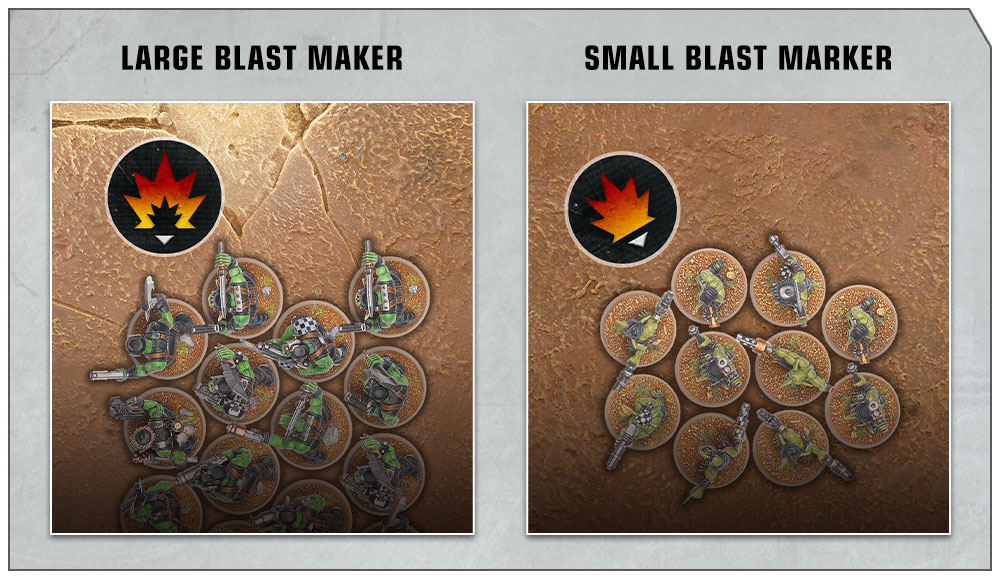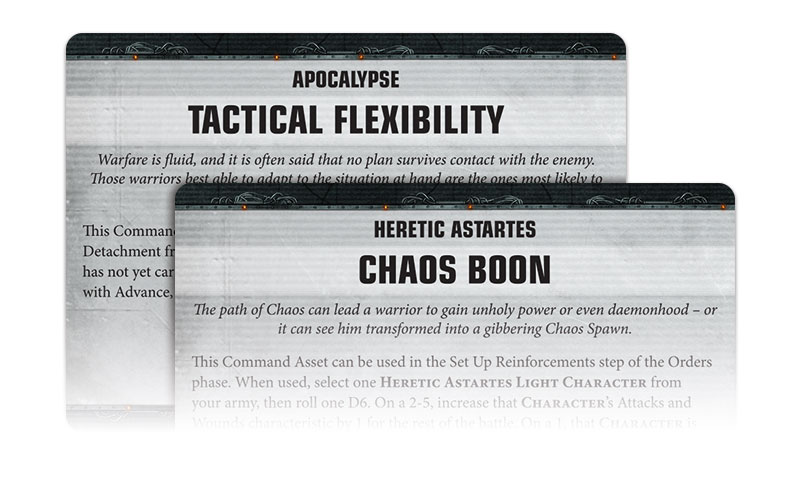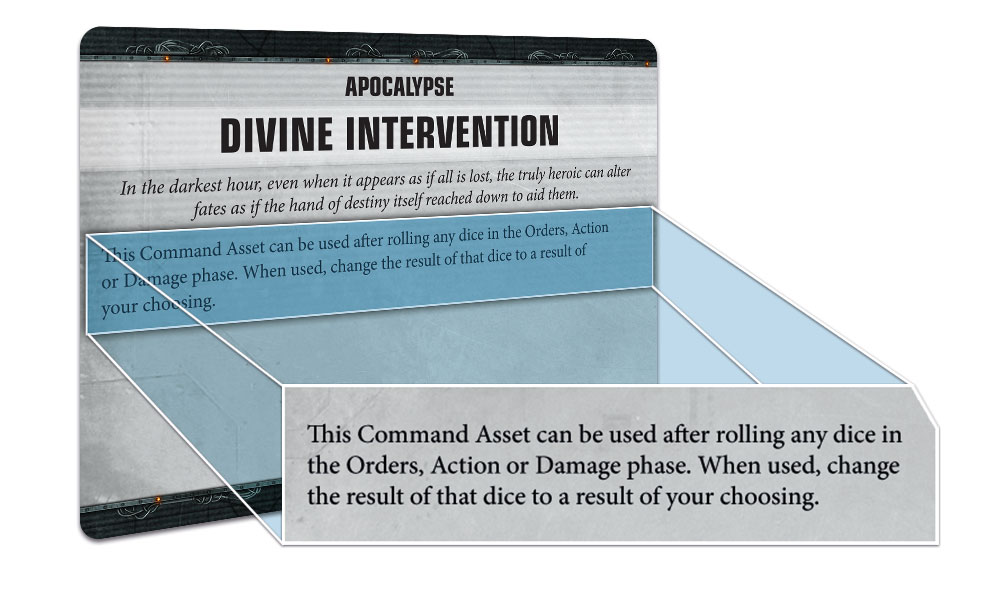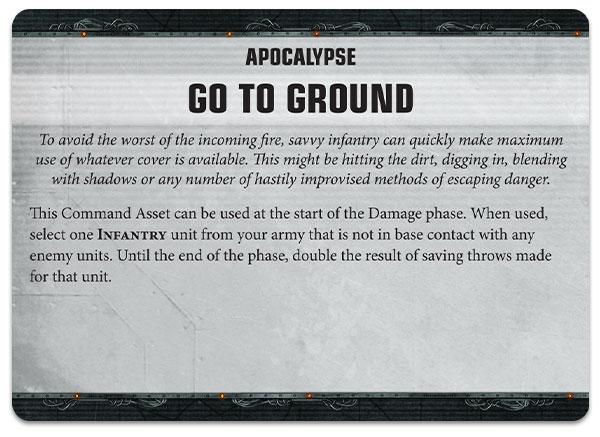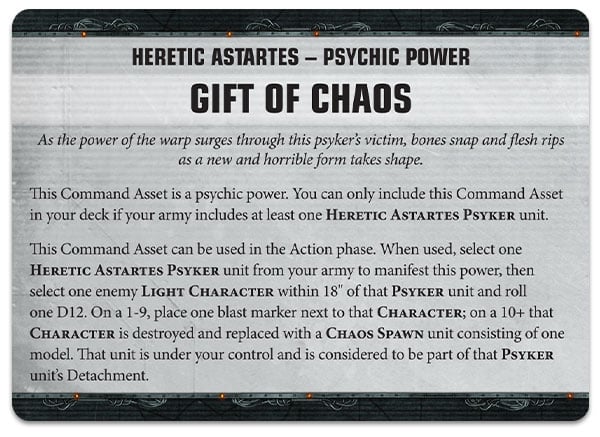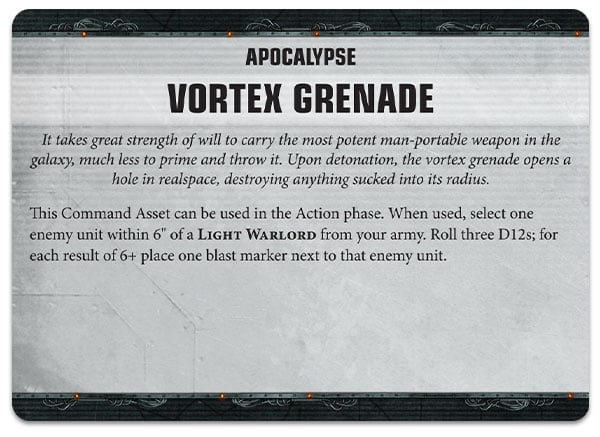The previews continue with another look into the Apocalypse today.
via the Warhammer Community
https://www.warhammer-community.com/2019/06/19/prepare-for-the-apocalypse-part-3gw-homepage-post-1/
In our latest peek at Apocalypse, we’re exploring how your massed ranks of warriors cause damage to anyone foolish enough to oppose them and we’re taking a closer look at how Command Assets can make your army more flexible and deadly.
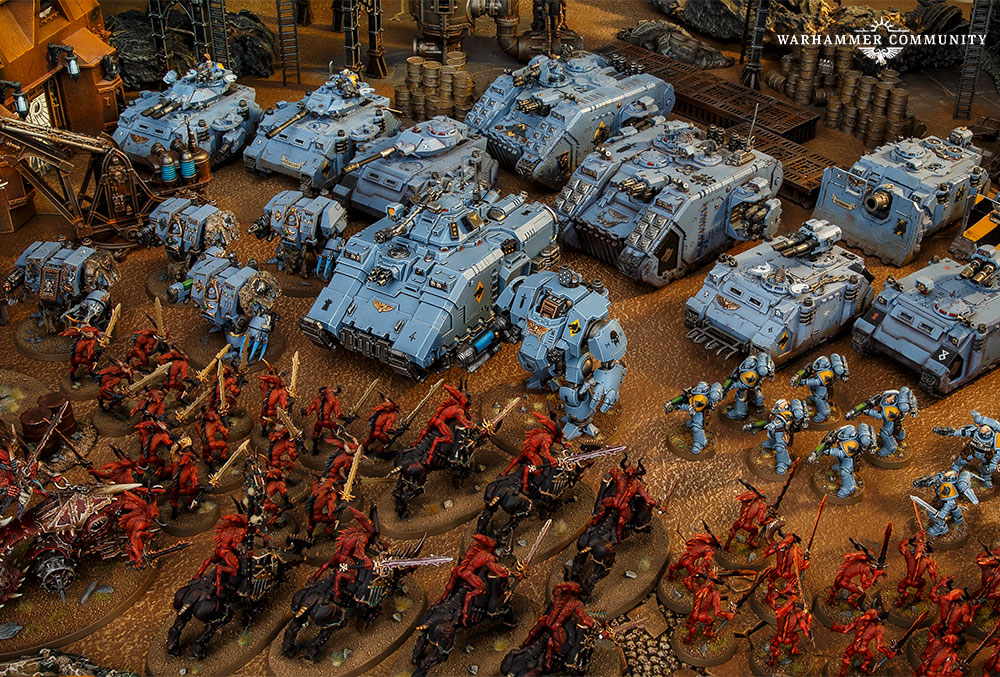
Damage
As you’d expect when massive armies and deadly war machines clash, devastation is the outcome. The scale of such destruction can’t be represented by six-sided dice alone and so Apocalypse uses twelve-sided dice too. Of course, this can just mean that there are even more sides that ignore the whispered prayer, “anything but a 1”!
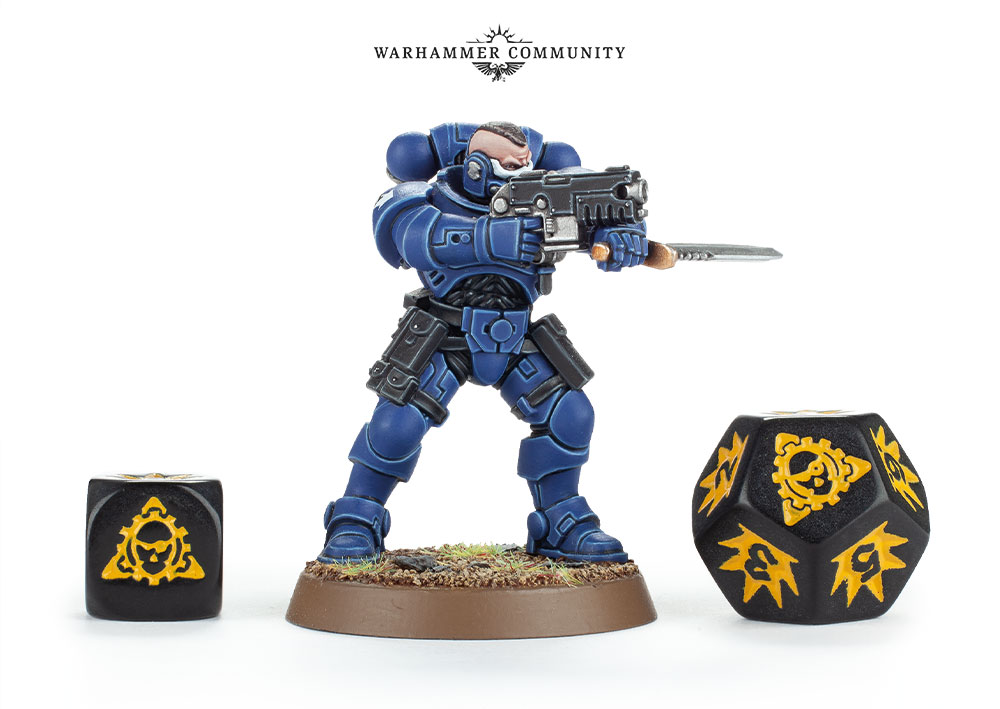
When attacking, you use a D6 to see if you’ve hit the target, just as you would in Warhammer 40,000. However, to represent the larger scale of Apocalypse battles and the masses of deadly weapons, you use a D12 to see if you’ve caused a wound. If you roll above the SAP or SAT for the weapon that you’re using, then the target unit gets a small blast marker (we looked at SAP and SAT in our last preview – catch up now if you missed it). If a unit already has a small blast marker at this point, it is removed and replaced with a large blast marker.
At the end of each turn, in the Damage phase, you then take a saving throw for each blast marker that a unit has but you roll a D12 for each small blast marker and a D6 for each large blast marker! For each failed saving throw the unit gets a damage marker, and when the number of damage markers equals the unit’s Wounds characteristic the unit is destroyed.
So, let’s say that Guilliman is fighting a Khorne Lord of Skulls, and the Lord of Skulls attacks with its great cleaver of Khorne. If it gets four hits, then you’d roll four D12s and compare the scores to the SAT of the weapon (the Primarch of the Ultramarines is so large that he counts as a tank).
Now let’s say that you roll 3, 8, 10 and 11 – that’s three successes, so you’d normally put three small blast markers next to Guilliman. However, since the weapon has the Destroyer trait, the number of blast markers is doubled! Also, since you place the markers one at a time, this would mean that Guilliman would get three LARGE blast markers instead.
Assuming that he takes no further damage in the Action phase, this means that Guilliman needs to take three saves in the Damage phase, each with a D6.
If he rolls 2, 3 and 5, then he would get a single damage marker and so he lives to fight for another turn!
In general, the more blast markers that you can assign to an enemy unit the better!
Command Assets
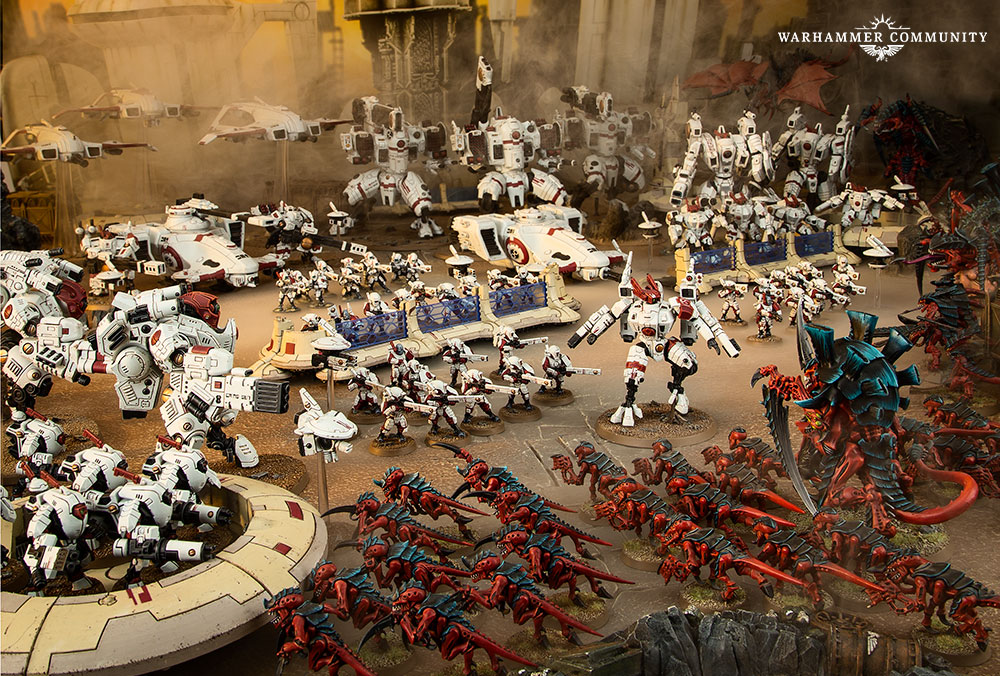
Command Assets are cards that can have a massive impact on your games of Apocalypse and we’ve already taken a look at a few of them in our Apocalypse Faction Focus previews. They represent you being in control of the battlefield, issuing extra instructions to your troops and using esoteric weaponry to defeat your foes!
There are two kinds of Command Asset – universal (which say “Apocalypse” on them and can be used by anyone) and Faction specific (which will have the name of the Faction they are for).
There are also some Command Assets, such as the psychic powers, that can only be used if your army contains certain units – if you don’t have any Psykers, you’re not going to be firing any mental bullets at the enemy.
How They Work
Before the game starts, you construct a deck of 30 Command Asset cards that are available to your army and shuffle them. Then, in the Orders phase, draw one card plus one additional card for each Warlord in your army, up to a maximum of 10. The text on each card tells you the effect of the card and when it can be played.
Awesome Assets
With 400 Command Assets to choose from, there are bound to be some that you want to include in your decks. Some are very straightforward and do things such as increase the survivability of a unit.
Some Command Assets let your units take a free action. For example, Honour the Chapter allows a unit to Fight when you play it, meaning that they could Fight after making a Shoot action (which is normally only allowed for Super-heavy units) or letting them Fight twice!
Psychic powers can be particularly gruesome for your opponent. Even if you roll badly with Gift of Chaos, for example, you’ll put a blast marker next to an enemy Character, meaning that they could take damage in the Damage phase, but if you roll well, you’ll replace them with a Chaos Spawn!
Of course, we weren’t going to miss the opportunity to bring back some old favourites such as the vortex grenade.
These are just a small selection of the Command Assets available. You can really build a deck that helps to emphasise the strengths of your army (or the weaknesses of your opponent’s) and playing the right card at the right time can change the game.


